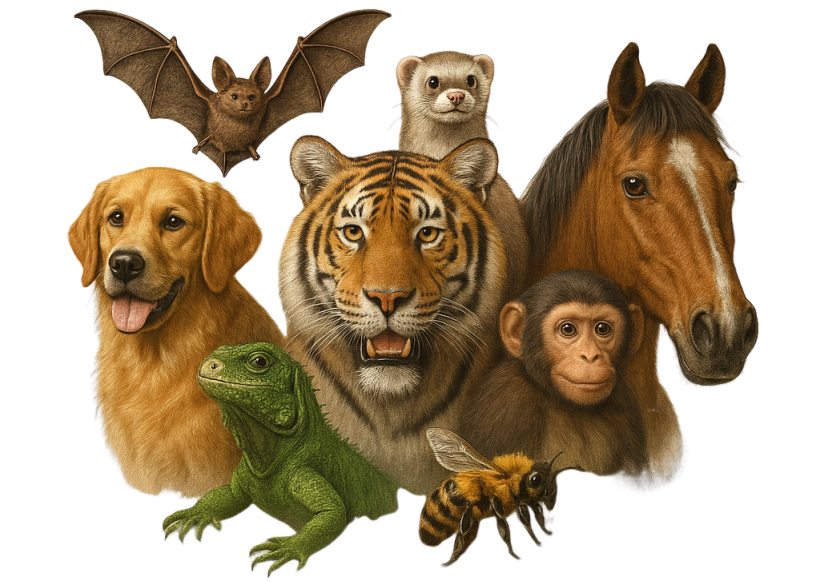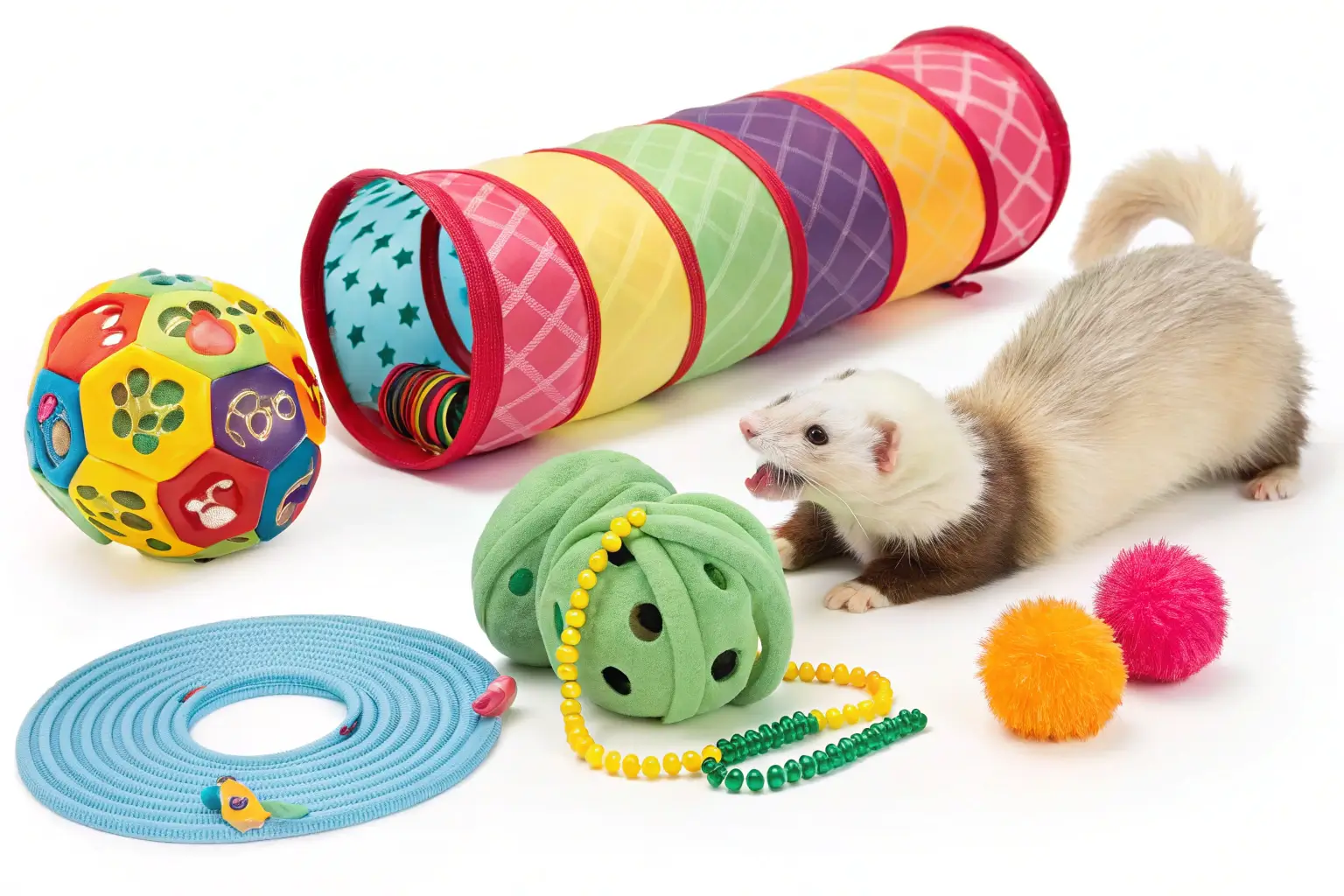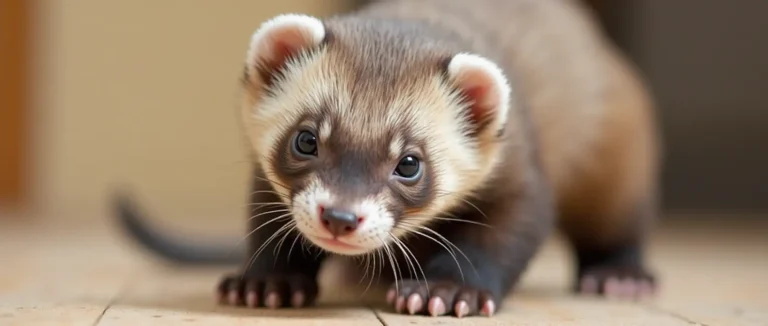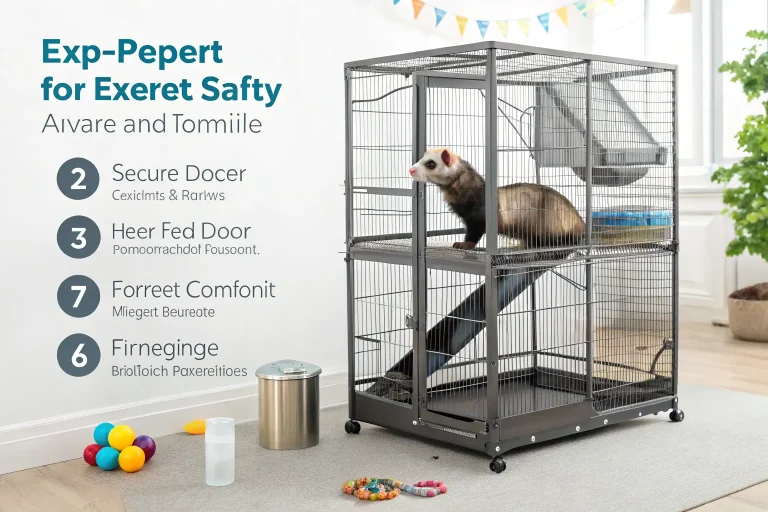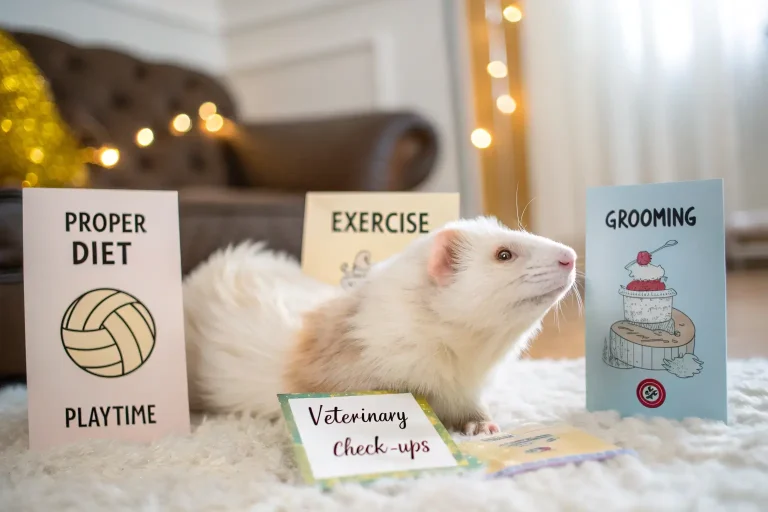Best Ferret Toys – 9 Ultimate Playthings for Your Fuzzy Friend!
Introduction
Ferrets, those energetic little bundles of curiosity and mischief, have been captivating pet owners for centuries with their playful antics and boundless energy. These domestic descendants of the European polecat aren’t just adorable – they’re highly intelligent creatures with a natural instinct for play that requires proper stimulation. Finding the right ferret toys isn’t just about keeping them entertained; it’s essential for their physical health, mental development, and overall well-being.
As any ferret owner knows, these furry companions can sleep up to 18 hours a day, but when they’re awake, they’re fully committed to playtime! Without adequate toys and stimulation, ferrets can become bored, destructive, or even depressed. The right selection of ferret toys can make all the difference between a happy, well-adjusted pet and one that develops behavioral issues.
Did you know that ferrets have been domesticated for over 2,500 years? Originally used for hunting rabbits and rodents, these playful predators have retained their natural instincts to explore, tunnel, and chase – making toy selection particularly important for channeling these behaviors positively.
Species Overview
Scientific Name: Mustela putorius furo
Physical Characteristics: Ferrets typically weigh between 1.5-4.5 pounds and measure 13-20 inches long (including their tail). Their slender, flexible bodies allow them to squeeze through remarkably small spaces – a trait to remember when selecting toys! Their fur comes in various colors and patterns, including sable, albino, silver, and cinnamon. Ferrets have distinctive facial masks, alert ears, and bright, curious eyes that reflect their intelligent nature.
Subspecies: The domestic ferret (Mustela putorius furo) is a subspecies of the European polecat (Mustela putorius). While not technically a subspecies distinction, ferrets are bred in different color variations called “morphs,” including standard (sable), albino, silver mitt, and cinnamon.
Habitat and Distribution
Natural Habitat: Before domestication, ferrets’ wild ancestors thrived in woodland edges, grasslands, and farmlands. This explains why domestic ferrets still love tunneling, burrowing, and exploring tight spaces – behaviors that should guide your ferret toy choices.
Geographic Range: While domestic ferrets exist worldwide as pets, wild ferrets and their polecat ancestors are native to Europe and parts of Northern Africa. In the United States, black-footed ferrets (a different species) are indigenous to prairie regions but highly endangered.
Adaptations: Ferrets have evolved with several adaptations that influence their play behavior. Their flexible spine allows them to turn 180 degrees within tunnels, their sharp claws help them dig and grasp objects, and their keen sense of smell drives much of their exploratory behavior. When selecting ferret toys, choose options that support these natural adaptations and instincts.
Top 9 Ferret Toys for Endless Entertainment
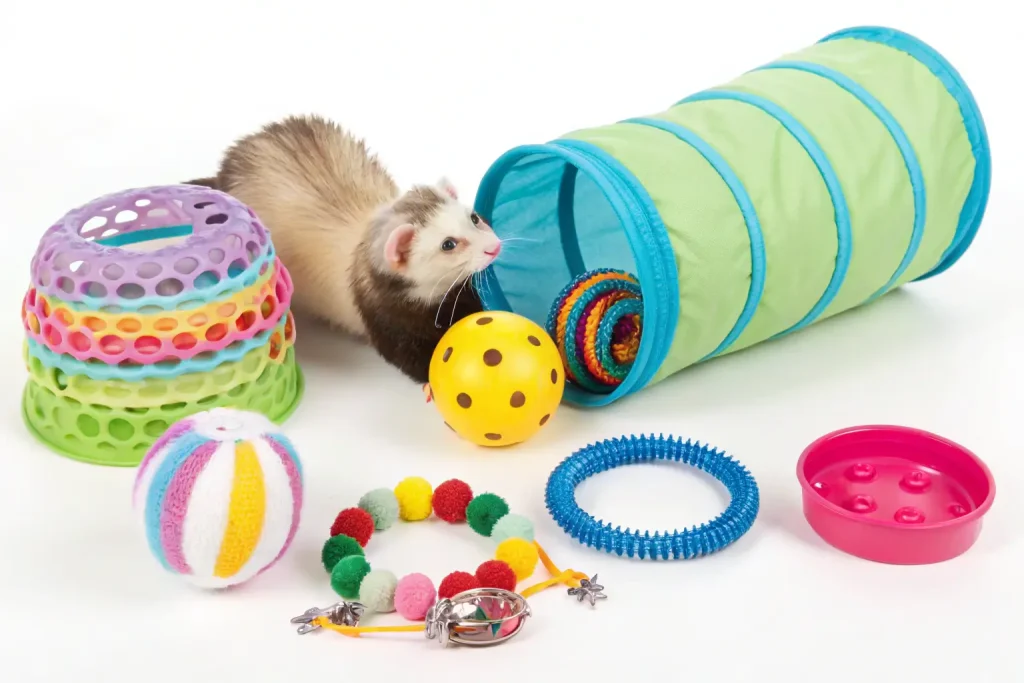
1. Tunnel Systems and Tubes
Nothing captures a ferret’s attention quite like a good tunnel system. These play structures mimic their natural burrowing instincts and provide the enclosed spaces ferrets adore.
Best Features:
- Collapsible fabric tunnels are easy to store
- Plastic tubes can be configured into multiple shapes
- Look for tunnels at least 4 inches in diameter for comfort
Playtime Tip: Connect multiple tunnels to create an elaborate maze, occasionally rearranging the configuration to maintain interest and provide mental stimulation.
2. Dig Boxes
Digging is a natural behavior for ferrets, and providing a designated space for this activity prevents them from attempting to dig at your carpets or furniture.
Best Features:
- Large plastic container filled with rice, beans, ball pit balls, or shredded paper
- Provides sensory stimulation and exercise
- Satisfies natural digging instincts
Playtime Tip: Hide small toys within the dig box to encourage exploration and extend play sessions.
3. Interactive Puzzle Toys
Ferrets are highly intelligent and benefit greatly from toys that challenge their problem-solving abilities.
Best Features:
- Toys with hidden compartments for treats
- Multi-level puzzles with moving parts
- Difficulty levels that can grow with your ferret’s skills
Playtime Tip: Start with simpler puzzles and gradually increase the complexity as your ferret masters each level.
4. Plush and Soft Toys
Many ferrets enjoy carrying, wrestling with, and stashing soft toys throughout their living space.
Best Features:
- Small, ferret-sized stuffed animals without small parts
- Durable fabric that resists tearing
- Machine-washable materials
Playtime Tip: Rotate plush toys regularly to maintain interest, and always inspect them for damage that could lead to ingestion of stuffing.
5. Balls and Rolling Toys
The erratic movement of balls and rolling toys triggers a ferret’s predatory instincts, providing excellent exercise and entertainment.
Best Features:
- Small, lightweight balls that make noise when moved
- Balls with bells inside for auditory stimulation
- Toys that can be batted and chased easily
Playtime Tip: Try introducing rolling toys during “free roam” time outside the cage for maximum space and enjoyment.
6. Crinkle Toys and Noise Makers
Ferrets are naturally attracted to interesting sounds, making crinkle toys particularly engaging.
Best Features:
- Toys made from crinkly material
- Small toys that make squeaking or rattling sounds
- Durable construction that withstands rough play
Playtime Tip: Combine crinkle toys with tunnels by hiding them inside for an extra exciting discovery.
7. Hammocks and Hanging Toys
While primarily for resting, hammocks can double as play items when equipped with dangling toys or interactive elements.
Best Features:
- Hammocks with attached dangling toys
- Suspension systems that allow for “bouncy” movement
- Multiple levels for climbing and exploring
Playtime Tip: Hang small toys from the hammock edges to encourage interaction even during rest periods.
8. Water Play Toys
Many ferrets enjoy splashing and playing in shallow water, especially during warmer months.
Best Features:
- Shallow water dishes with floating toys
- Small kiddie pools (with supervision only)
- Water-safe balls and floatable objects
Playtime Tip: Always supervise water play closely, and keep sessions brief to prevent chilling.
9. DIY Ferret Toys
Some of the best ferret toys don’t require a trip to the pet store. Homemade options can be just as engaging and much more cost-effective.
Best Features:
- Paper bags and cardboard boxes modified for safety
- PVC pipe constructions for tunneling
- Empty toilet paper tubes filled with treats
Playtime Tip: Replace DIY toys frequently as they wear out, and always remove any potentially dangerous components like tape or staples.
Diet and Feeding Habits
What They Eat: Ferrets are obligate carnivores, requiring a diet high in animal protein and fat. In the wild, their ancestors hunted small mammals and birds. Domestic ferrets require specialized ferret food or high-quality cat food with at least 30% protein and 15-20% fat.
Hunting Behavior: Though domesticated, ferrets retain strong hunting instincts, which explains their love for chase toys and games that mimic prey movement. Their hunting behavior involves stalking, pouncing, and carrying prey – behaviors you’ll notice during playtime with many of their favorite toys.
Dietary Needs: Their unique metabolism requires frequent, small meals throughout their active periods. This fast metabolism also means they burn energy quickly during play sessions, so don’t be surprised if your ferret takes short breaks to refuel before returning to their toys!
Behavior and Social Structure
Social Behavior: Ferrets are highly social animals that typically live in groups called “businesses.” This social nature makes interactive playtime essential for their emotional well-being. They often play together with shared toys, engaging in wrestling, chasing, and playful nipping. When selecting toys for multiple ferrets, choose durable options that can withstand group play sessions.
Communication: Ferrets communicate through a variety of vocalizations and body language. During play, happy ferrets perform a characteristic “war dance” – a bouncing, hopping movement with an arched back that indicates excitement. Quality toys often trigger this delightful behavior, which is a clear sign your ferret is thoroughly enjoying their plaything.
Mating and Reproduction: In domestic settings, most pet ferrets are spayed or neutered, which reduces certain behaviors but doesn’t diminish their playful nature. Intact ferrets may show different toy preferences during breeding seasons, with females sometimes collecting soft toys in nesting behavior.
Conservation Status
Endangerment Level: Domestic ferrets are not endangered, though their wild ancestor, the European polecat, is listed as “Least Concern” by the IUCN Red List. However, the related black-footed ferret (Mustela nigripes) native to North America is critically endangered.
Threats: The main threats to wild ferret species include habitat loss, disease, and declining prey populations. For domestic ferrets, the primary concerns are proper care, including appropriate toy selection to prevent boredom and destructive behaviors.
Conservation Efforts: Wildlife conservation programs, particularly for the black-footed ferret, focus on breeding programs and habitat protection. Understanding the natural behaviors of ferrets helps develop better enrichment protocols both in captive breeding programs and for pet ferrets.
Interesting Facts About Ferrets and Their Play Behavior
- Ferrets can sleep up to 18 hours daily, but when awake, they play with intense energy and enthusiasm.
- A happy, excited ferret performs a “weasel war dance,” hopping sideways and bouncing off objects – often triggered by a favorite toy.
- Ferrets have a natural instinct to collect and stash items – don’t be surprised to find toys hidden in unexpected places!
- The word “ferret” comes from the Latin “furittus,” meaning “little thief,” referencing their tendency to steal and hide objects.
- Ferrets have surprisingly poor eyesight but compensate with excellent hearing and smell, which influences how they interact with toys.
- A ferret’s spine is so flexible that they can turn around in tunnels barely wider than their bodies.
- Ferrets have been working animals for centuries, helping humans hunt rabbits by entering burrows – a behavior that explains their love for tunnel toys.
Tips for Caring for Your Ferret Through Play
Safety First: Always inspect toys regularly for damage that could lead to ingestion of small parts. Remove broken toys immediately.
Rotation System: Maintain a collection of toys and rotate them weekly to prevent boredom. Ferrets respond enthusiastically to “new” toys, even if they’re just ones they haven’t seen recently.
Supervised Play: Some toys, particularly those with small parts or string, should only be used during supervised playtime.
Play Space Configuration: Create a ferret-proof play area with multiple toys arranged to encourage different types of movement – tunnels for burrowing, balls for chasing, and climbing structures for vertical exploration.
Temperature Considerations: Ferrets are sensitive to heat, so ensure play areas remain cool, especially during active play sessions.
Social Playtime: Spend at least 2-4 hours daily interacting with your ferret through play. This bonding time is crucial for their social development and your relationship.
Health Through Play: Regular play sessions help prevent obesity, a common health issue in ferrets. Active play maintains muscle tone and supports cardiovascular health.
Role in the Ecosystem
Ecological Importance: In their natural habitat, wild ferret species help control rodent populations. For domestic ferrets, their “ecosystem” is your home, where they contribute joy, companionship, and certainly some mischief!
Impact of Enrichment: Properly enriched ferrets with adequate toys are less likely to develop destructive behaviors in the home. This environmental management through toys creates a harmonious living situation for both ferrets and their human companions.
Conclusion
The right selection of ferret toys isn’t just about entertainment – it’s a crucial component of responsible pet ownership that supports your ferret’s physical health, mental stimulation, and emotional well-being. From tunnels that satisfy their burrowing instincts to interactive puzzles that challenge their intelligence, each toy serves a purpose in your ferret’s development and happiness.
By understanding your ferret’s natural behaviors and providing appropriate outlets through carefully selected toys, you’re creating an environment where your fuzzy friend can thrive. Remember to rotate toys regularly, ensure safety with proper supervision, and most importantly, participate in playtime to strengthen your bond.
Whether you’re a new ferret owner or looking to enhance an established ferret habitat, investing in quality toys will pay dividends in the form of a healthier, happier, and more well-adjusted pet. Your ferret’s war dance of joy when introduced to a new tunnel or the focused determination as they solve a puzzle toy provides all the evidence needed that these playful investments are well worth it.
Frequently Asked Questions
How many toys should my ferret have at once?
While there’s no strict limit, most ferrets benefit from having 5-7 different types of toys available at any time. The key is variety rather than quantity – ensure you have options for tunneling, chasing, carrying, and problem-solving. Rotate toys weekly to maintain interest.
Are there any toys I should avoid giving my ferret?
Absolutely. Avoid toys with small parts that could be swallowed, latex or rubber toys that can be chewed apart, toys with sharp edges, and anything made with materials that might be toxic if ingested. Also be cautious with string toys, which should only be used under supervision.
How do I know if my ferret likes a toy?
Ferrets are expressive with their preferences! Signs of toy approval include repeated interaction, the famous “war dance” of excitement, dragging the toy to their sleeping area, or visibly “stashing” it in a special place. If your ferret consistently ignores a particular toy, it’s probably not a favorite.
Can I use cat toys for my ferret?
Some cat toys work well for ferrets, particularly tunnels, crinkle toys, and certain plush toys. However, be cautious with toys containing catnip (which has no effect on ferrets) and always ensure the toy is sturdy enough to withstand a ferret’s rough play style.
How often should I replace my ferret’s toys?
Inspect toys weekly for damage and replace any broken items immediately. Even with sturdy toys, plan to replace heavily used favorites every 3-6 months as they can wear out or harbor bacteria over time. DIY toys like cardboard constructions should be replaced more frequently.
What’s the best way to clean ferret toys?
Hard plastic toys can be washed with hot, soapy water or a diluted pet-safe disinfectant. Fabric toys should be machine washed regularly using a pet-safe detergent without strong fragrances. Always rinse thoroughly and ensure toys are completely dry before returning them to your ferret.
My ferret seems bored with all their toys. What should I do?
Try implementing a rotation system where you store some toys away for a few weeks before reintroducing them. You can also create new play experiences by rearranging existing toys, combining them in different ways, or introducing supervised games where you actively participate with your ferret.
Are expensive ferret toys better than budget options?
Not necessarily. While some premium toys offer greater durability or special features, many ferrets are equally happy with simple, inexpensive options or even DIY toys. The key factors are safety, alignment with natural behaviors, and variety rather than price point.
